Of the four movements in Edvard Grieg’s Peer Gynt suite 1, three have titles which immediately put an image in the mind. The second movement, Åse’s Death, was the most problematic to express as a quilt.
This movement corresponds to the part of the play where Peer Gynt returns home to find his mother dying. Musically, it is a slow lament in common time, played by the string section alone. Thematically, it consists of repeated four-bar phrases, with the first bar being crotchet-crotchet-minim, repeated exactly in a second bar, and then a two-bar motif that ends on either the V or I chord. Some of the phrases are played a fifth higher.

To recap the quilt axioms so far:
Quilt axioms:
- One tessellating shape per bar.
- One colour per chord.
- Adjacent bars in adjacent shapes.
- Not much empty space inside.
- Keep similar parts near each other.
- Everything has to come from my fabric stash.
As usual, I found that these axioms would need tweaking.
Conversations
Because of the repetitive nature of the phrases in this movement, Axiom 5 (Keep similar parts near each other) wants bars 1, 5, 9, etc. to line up, likewise bars 2, 6, 10, etc. This works against axiom 3 (Adjacent bars in adjacent shapes). I decided to let Axiom 5 win. Bars in this quilt are to be read top to bottom, left to right, like a book (and like Anne Adams’s Unraveling Bolero).
The modulation in bar 9, where the first eight bars are repeated a fifth higher, and then again back to the original key in bar 17, brought to mind a conversation between two participants whose voices have different base pitches. From there it was a short mental leap to depict the conversation as a text message app on a phone.
Colours
| Tonic | Procion MX dye |
| C | Blue MXG |
| G | Turquoise MXG |
| D | Green MX7BA |
| A | Green MX3G |
| E | Chartreuse MX |
| B | Gold Yellow MXR |
| F♯ | Orange MXG |
| C♯ | Red MXBG |
| G♯ | Violet MXRA |
Having dismissed the circle of fifths as unworkable for a colour scheme, I had some backpedalling to do: Åse’s Death is full of chord changes of a fifth up or down, or two fifths (a second) up or down, putting adjacent chords as near neighbours on the circle of fifths. Only three quarters of the circle of fifths features in Åse’s Death, so I compressed the rainbow onto the chords that are in it.
This movement uses several chords beyond traditional major and minor, including augmented, dominant sevenths, minor sevenths, sevenths with flat fifths, and sevenths with sharp fifths. In effect, the third, fifth, and seventh of any given chord are only of peripheral importance; the tonic is what matters: C♯, C♯m7, C♯7-5, C♯7+5, all are coded red.
Legato phrasing is a prominent feature in Åse’s Death, so I wanted to use fabric that blended from one colour to the next (to the next, to the next). I had no such fabrics in my stash, and I suspected that for some gradient sequences, no such fabric was available anywhere.
Dyeing to quilt
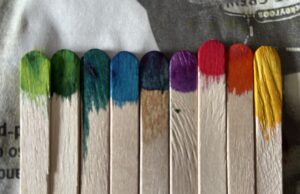
So I got into fabric painting. Synthetic Procion MX dyes are easy to prepare and apply to cotton fabric. Painted wet onto white fabric, the colours run together and result in instant gradients. I could then fussy-cut the rectangles that I needed. In theory.
In practice, the colours often ran too well, making an indistinct bleed. Because some Procion dyes are pure primary colours, and some are secondary blends of two or more primaries, the bleed was not uniform, erasing some colours almost entirely. I took this setback philosophically and pretended that I Meant To Do That.
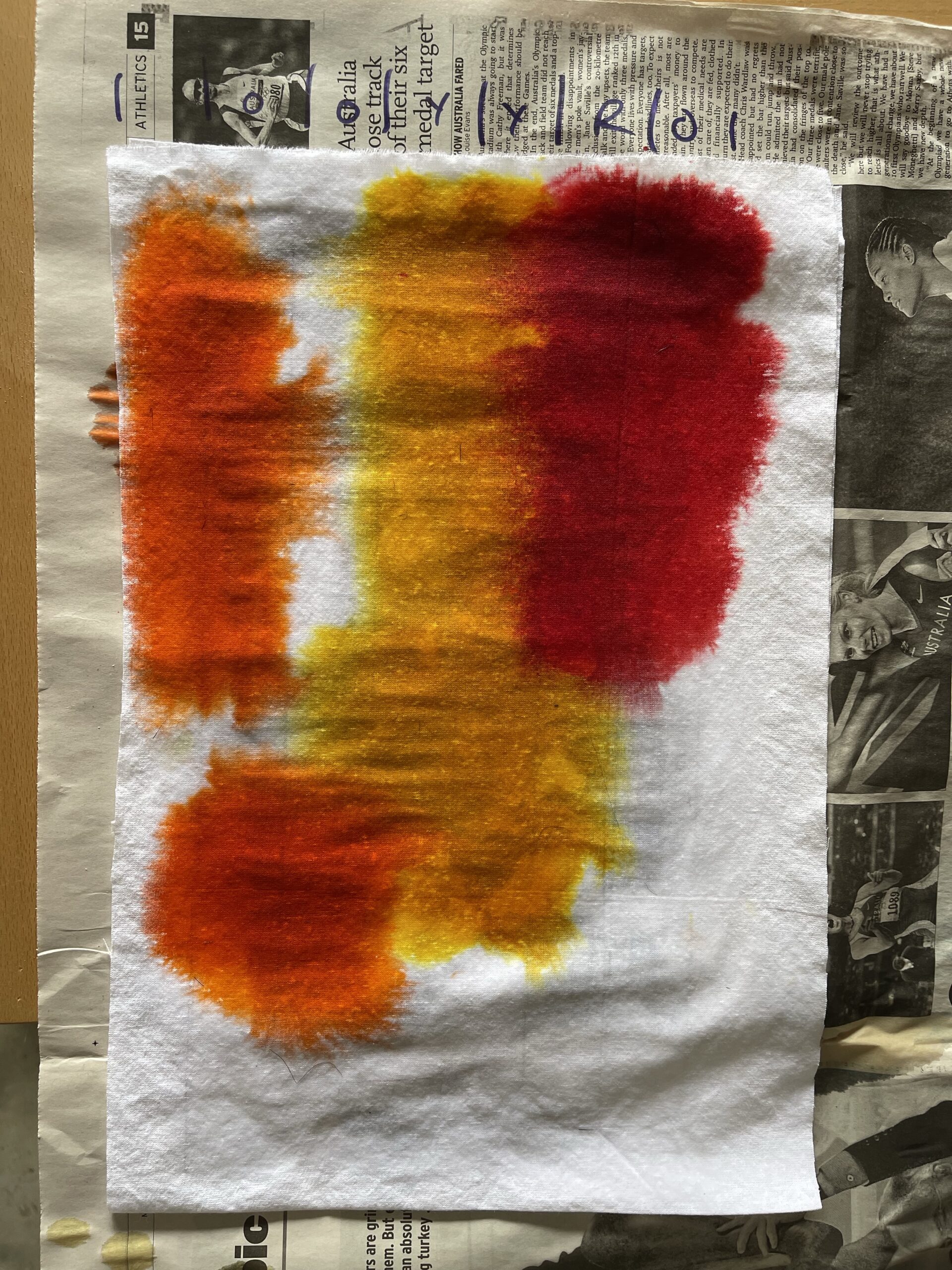
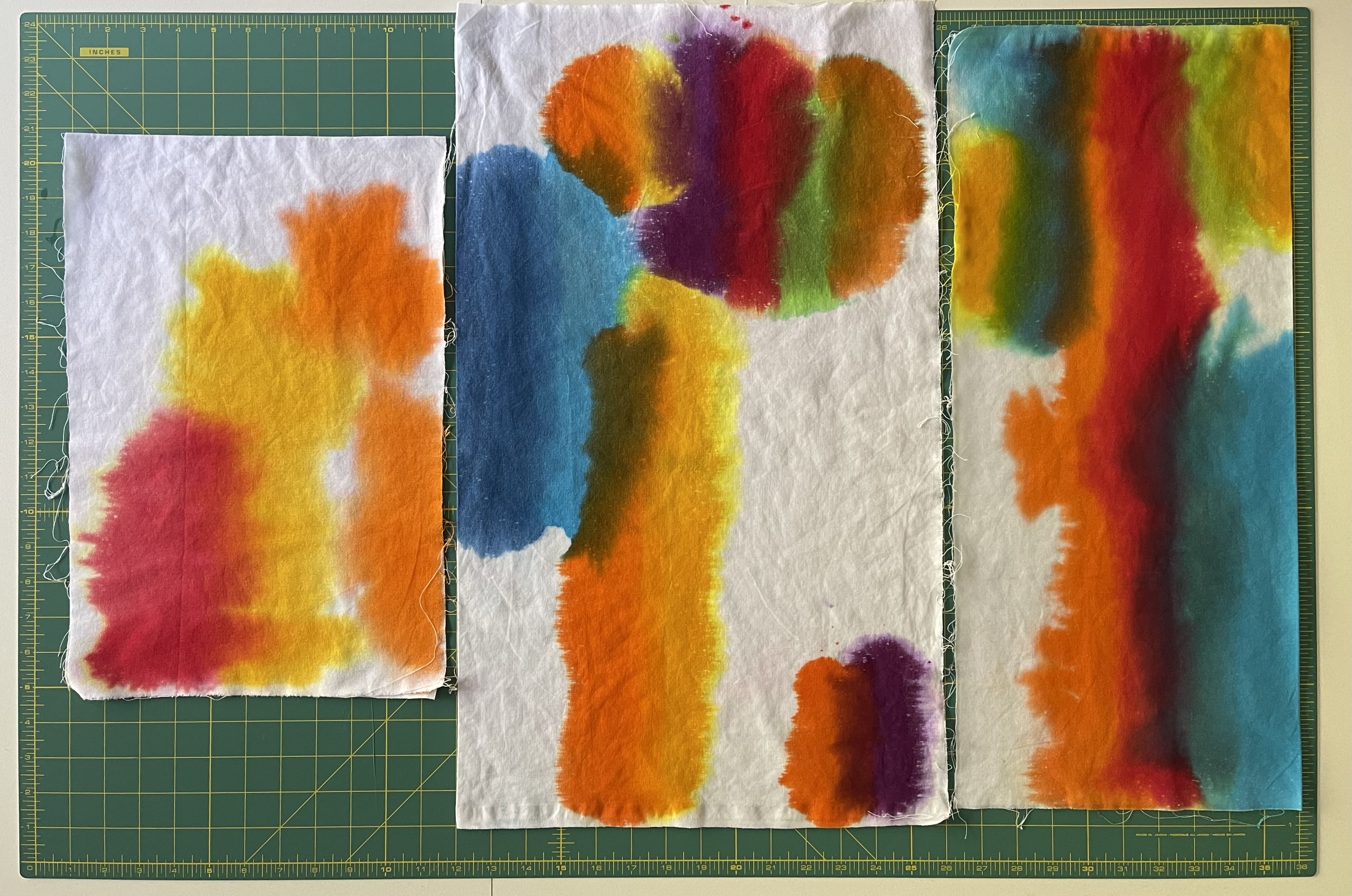
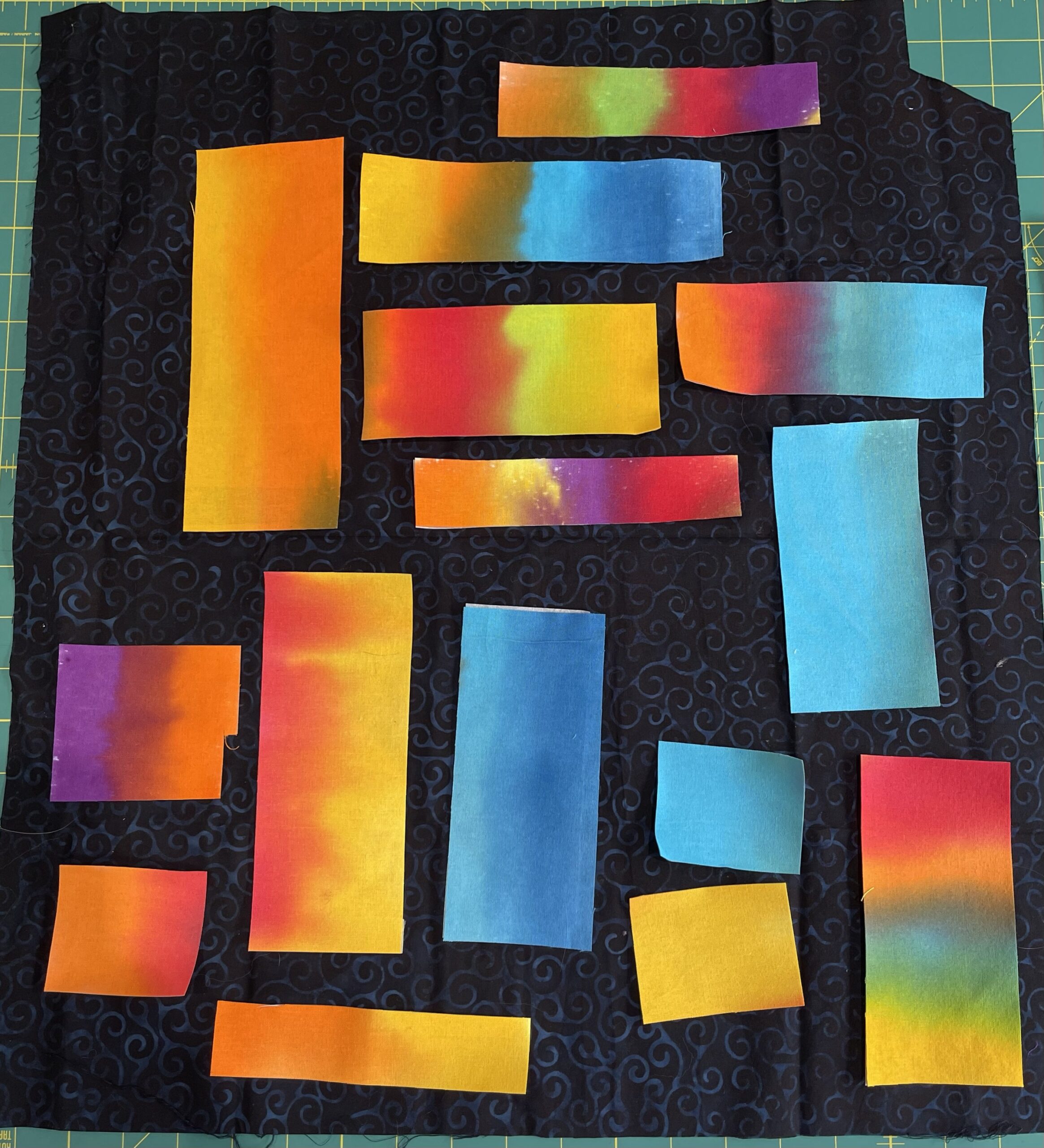
Design and dead ends
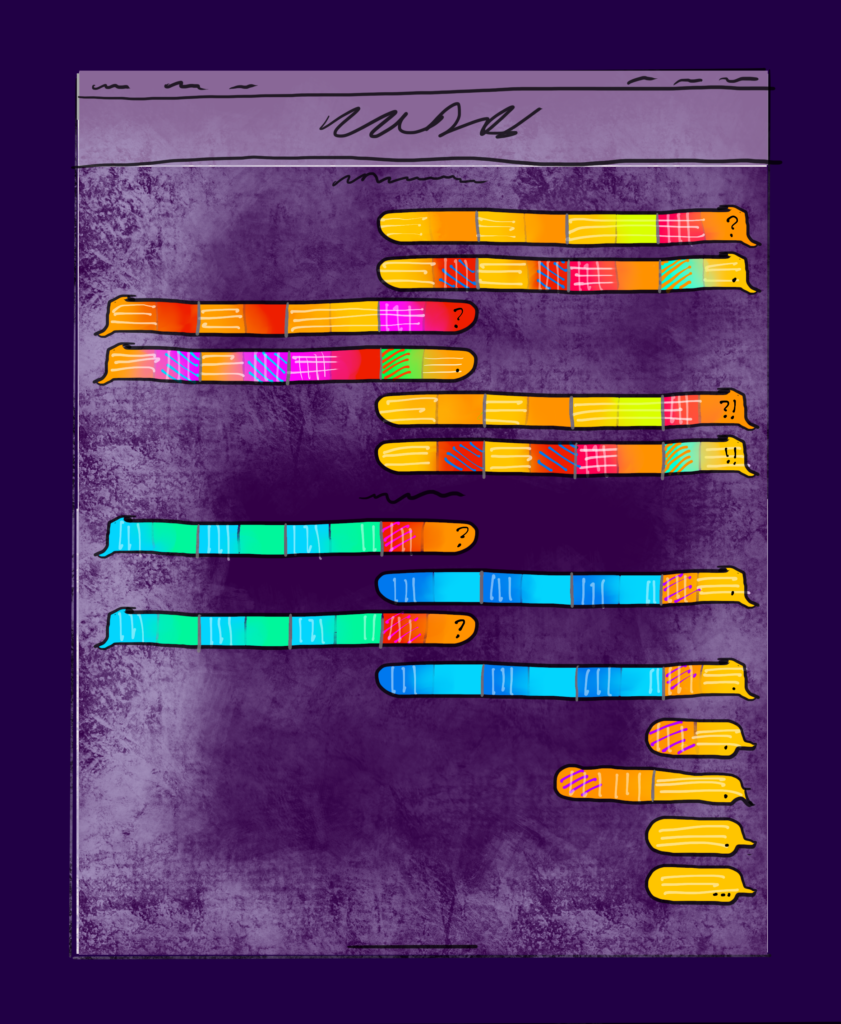
As customary, I designed the layout and colours in Procreate. Embellishments to mark the thirds, fifths and sevenths with crosshatching didn’t translate well to the medium of fibre and were abandoned. I ended up letting the colour gradients speak for themselves.
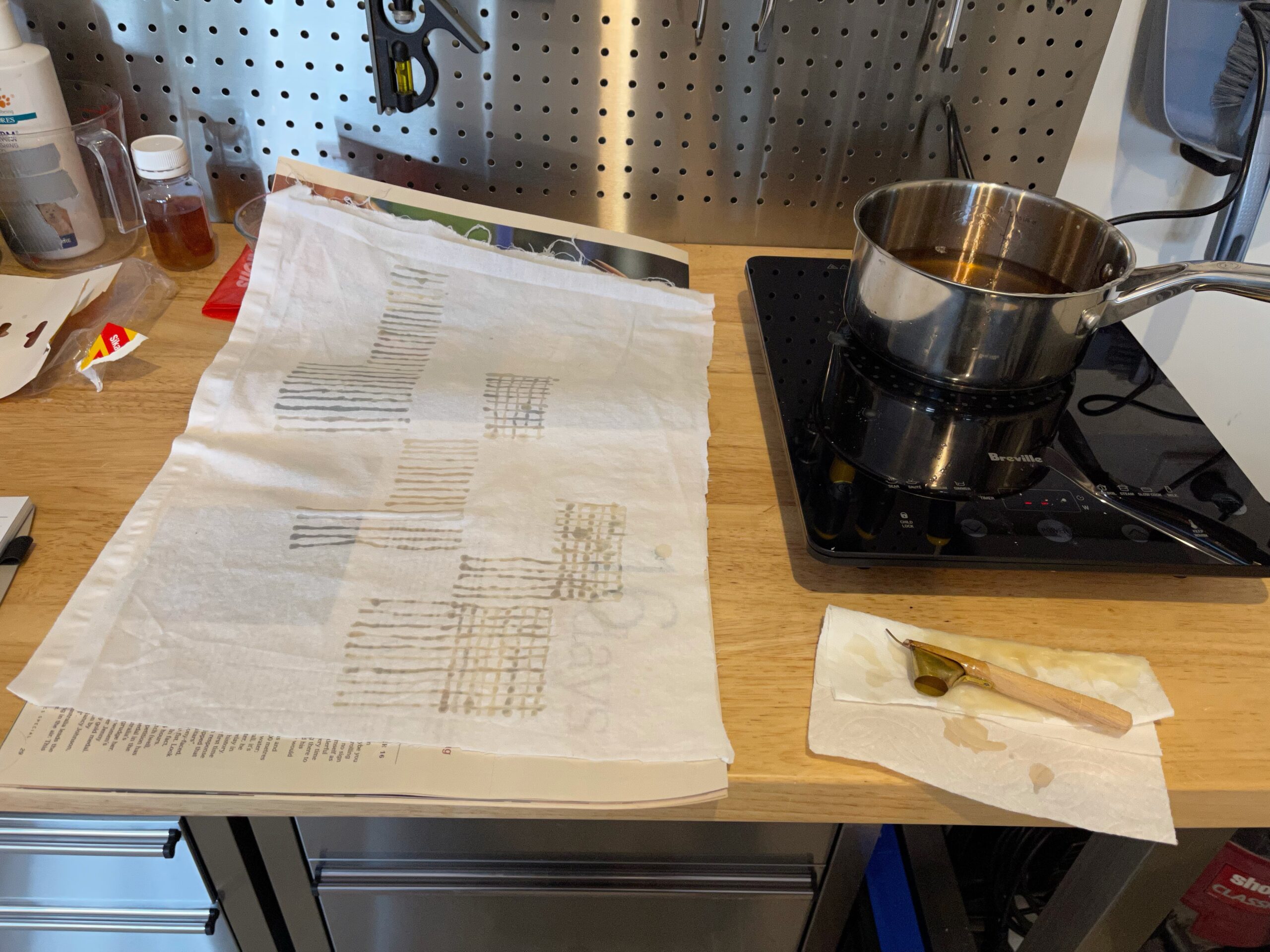
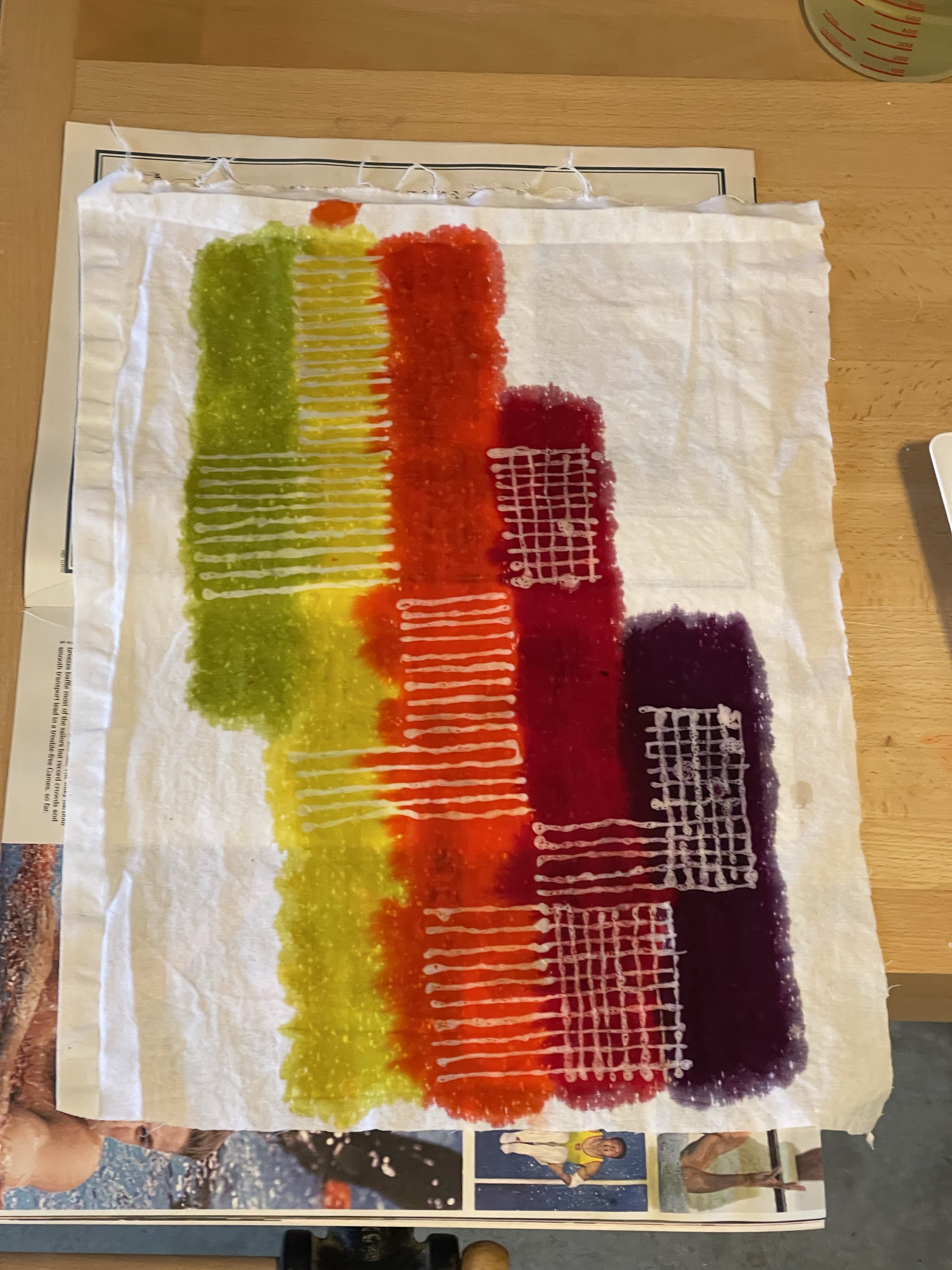
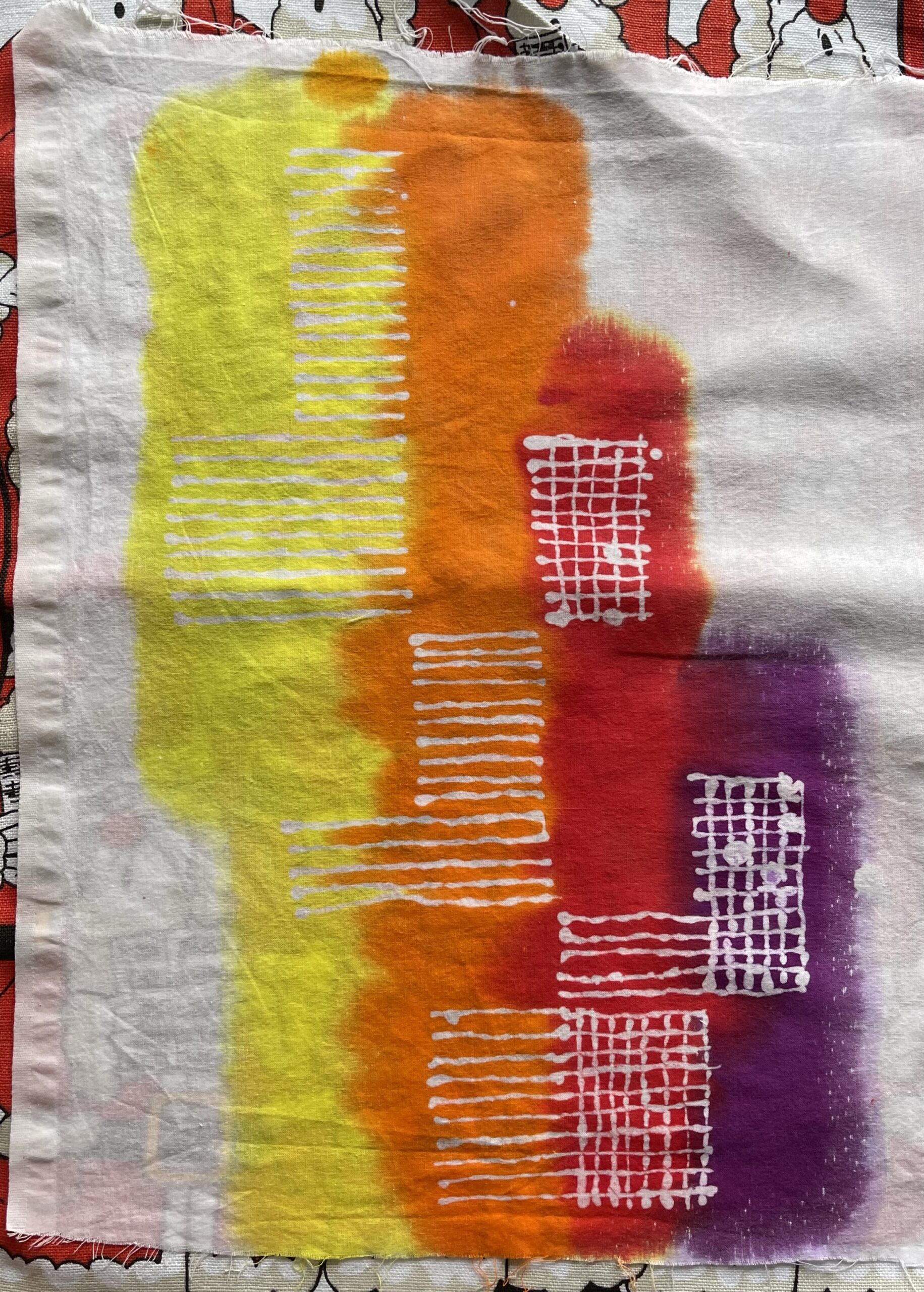
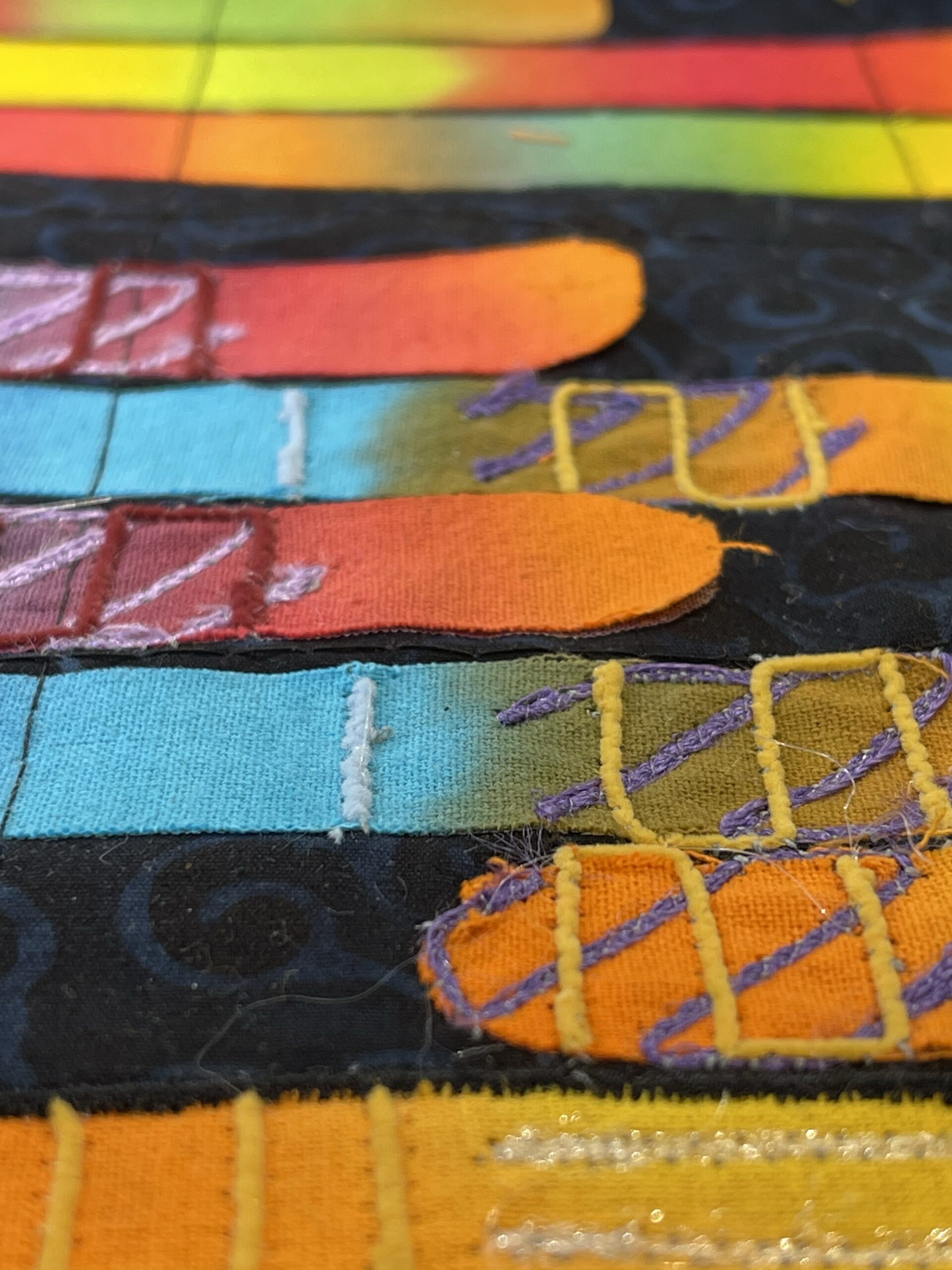
Construction
Construction of the quilt was primarily using appliqué, the pieces ironed onto the background with fusible web. Machine satin stitch in black held down the edges and prevented fraying.
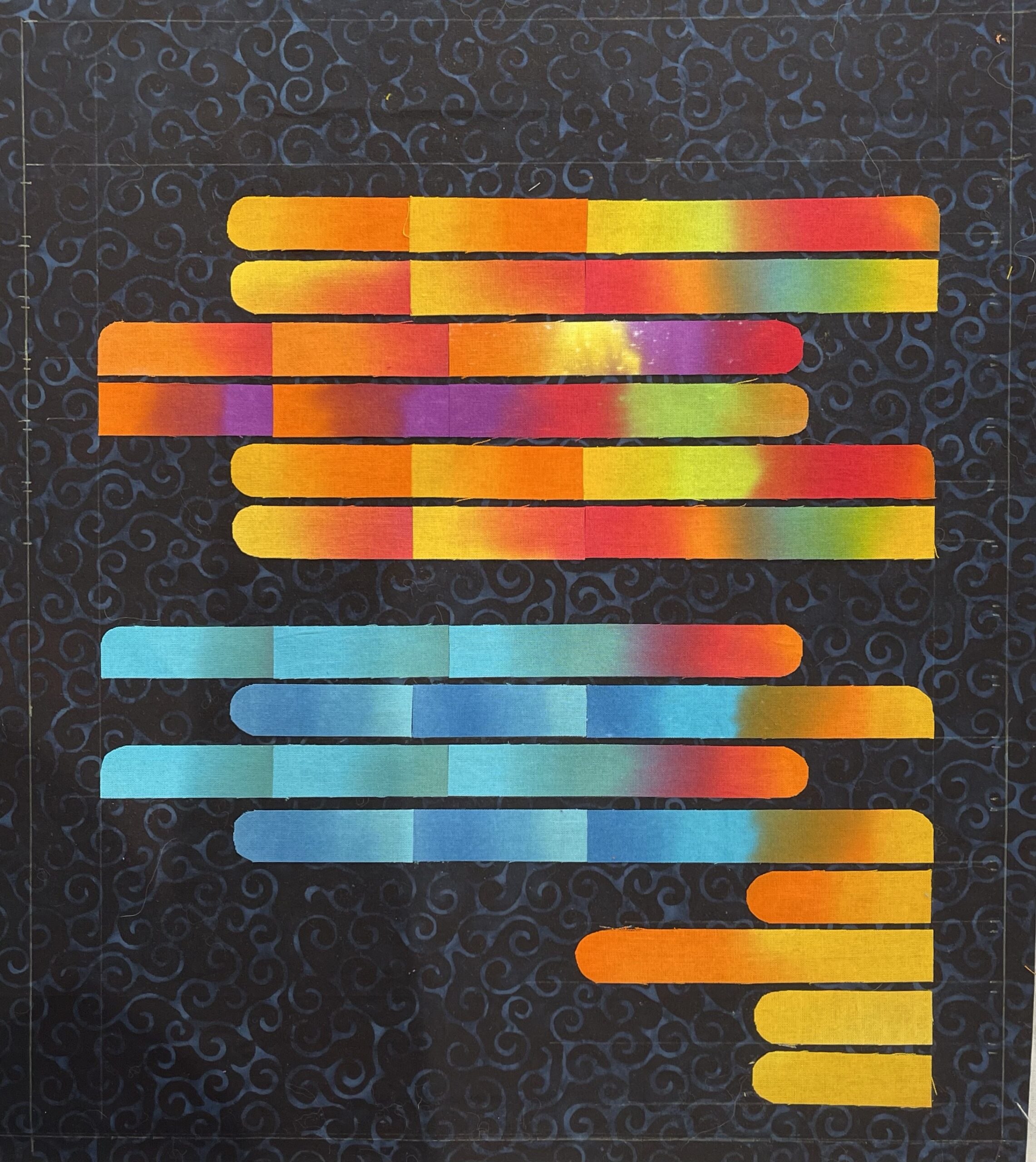
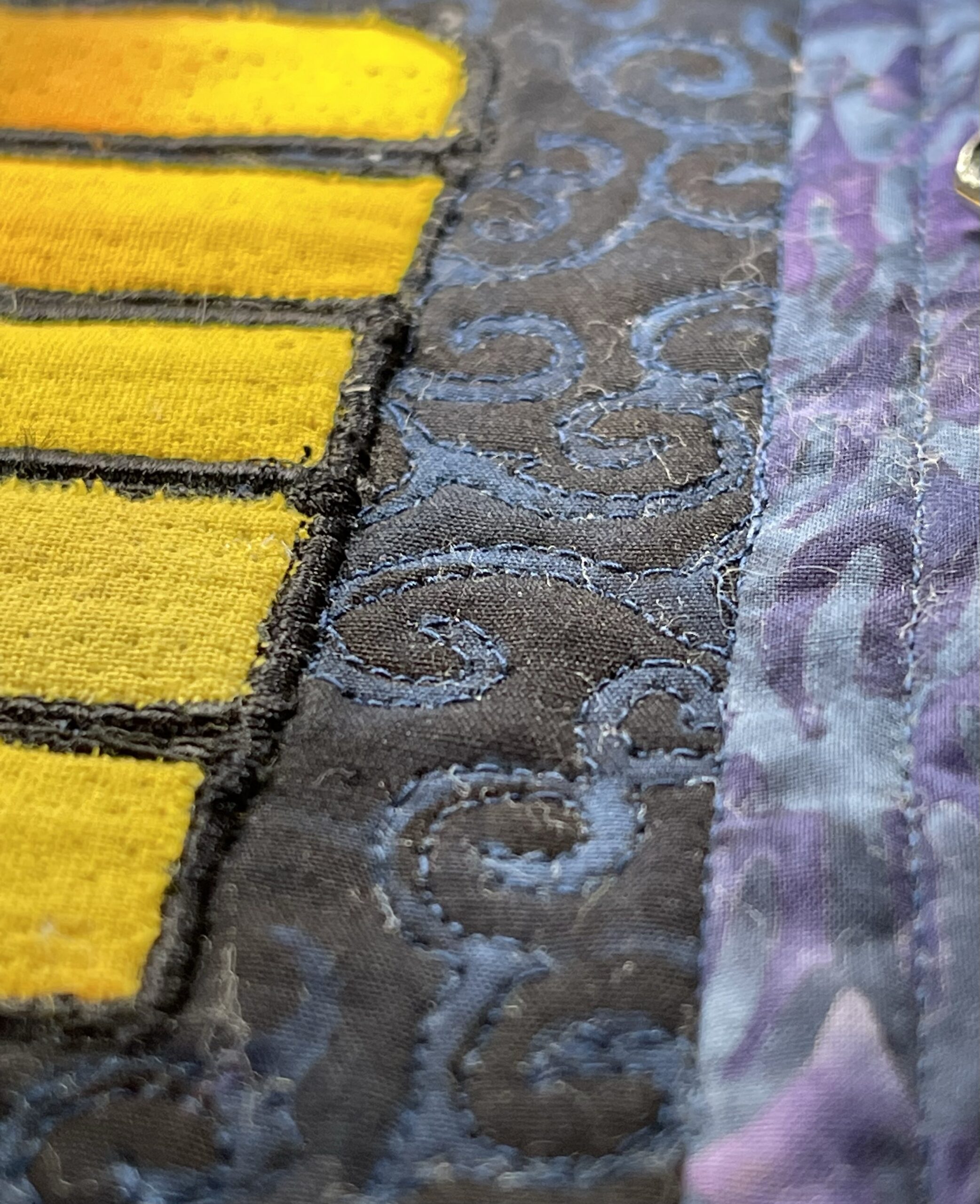
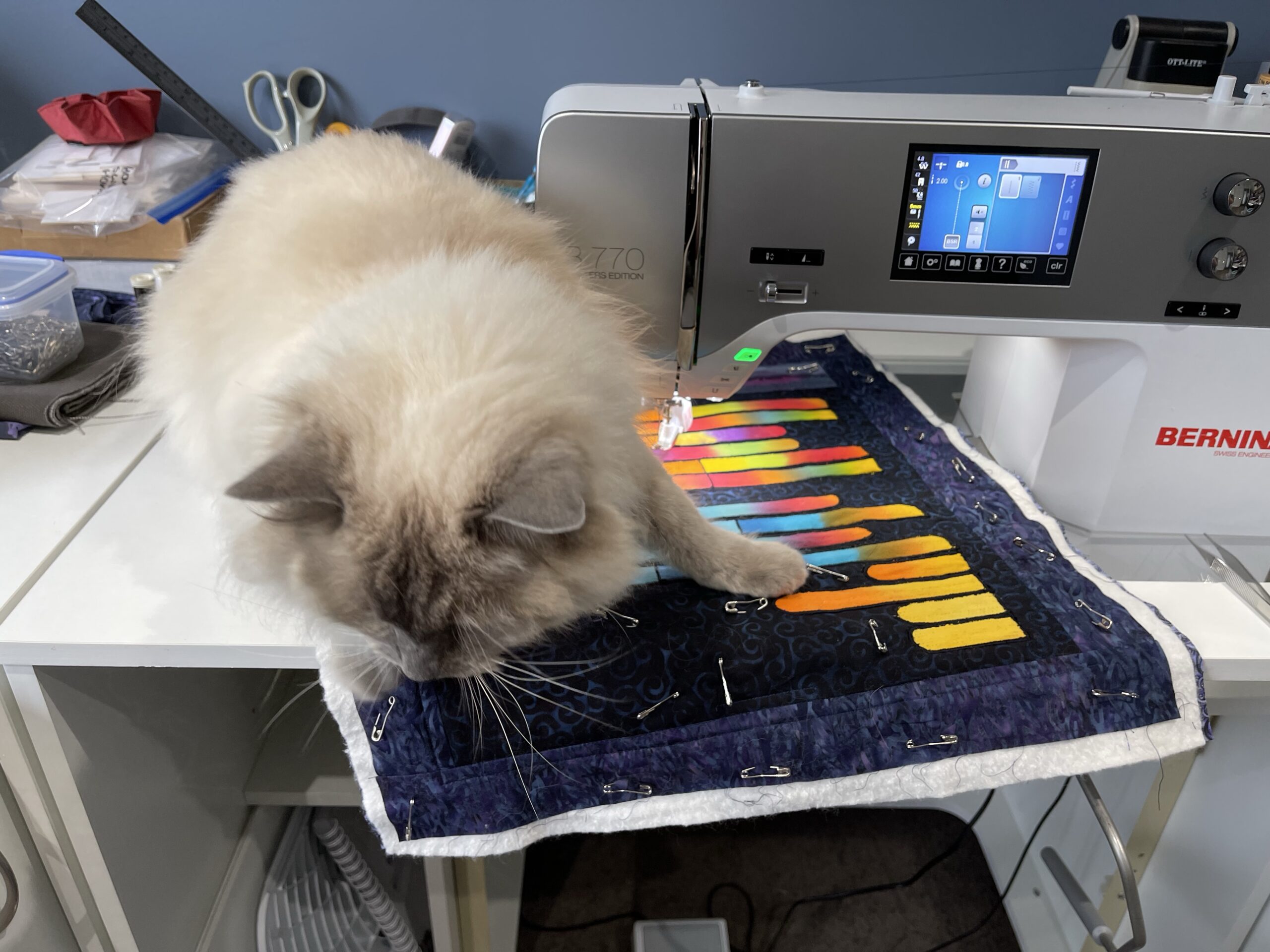
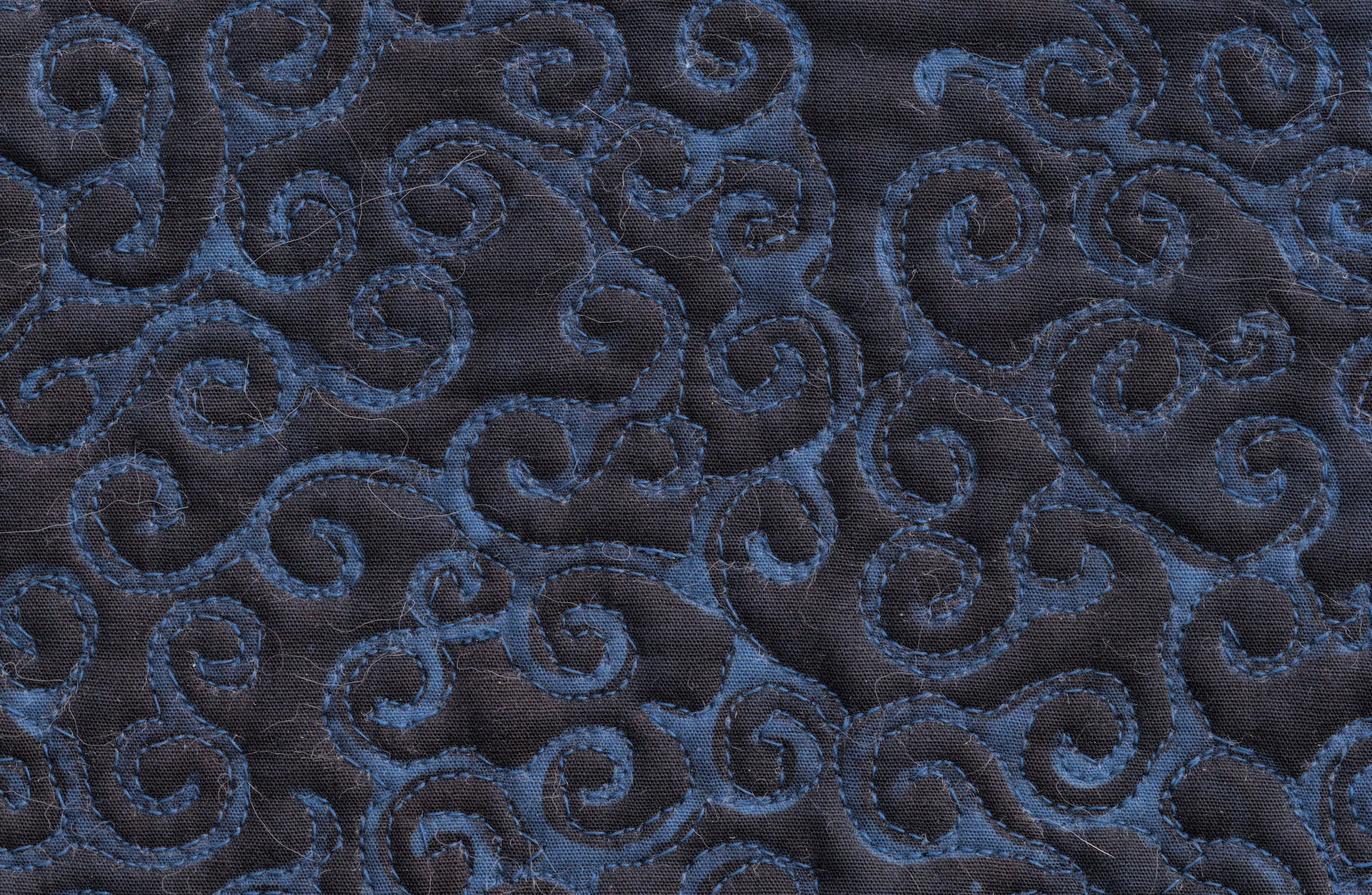
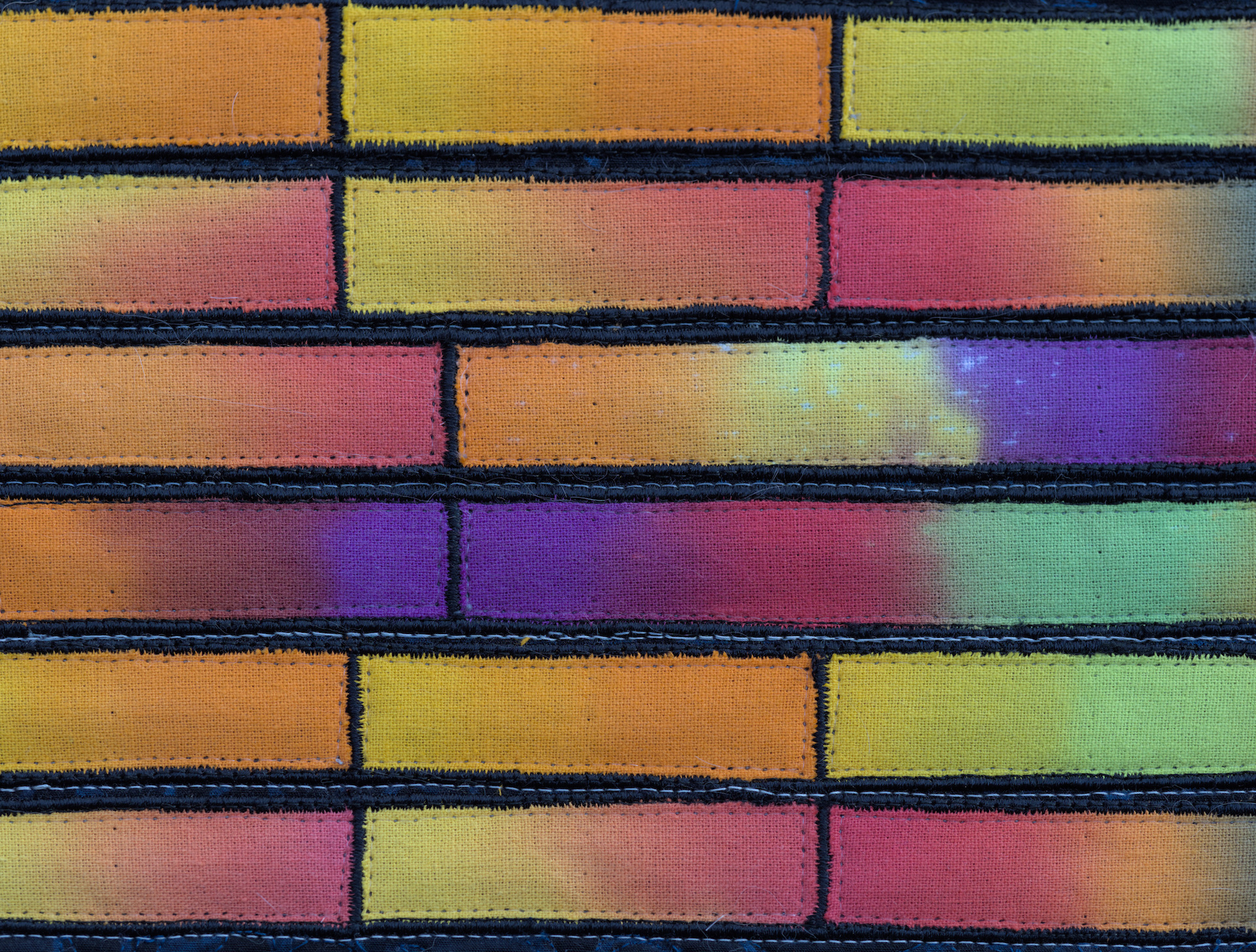
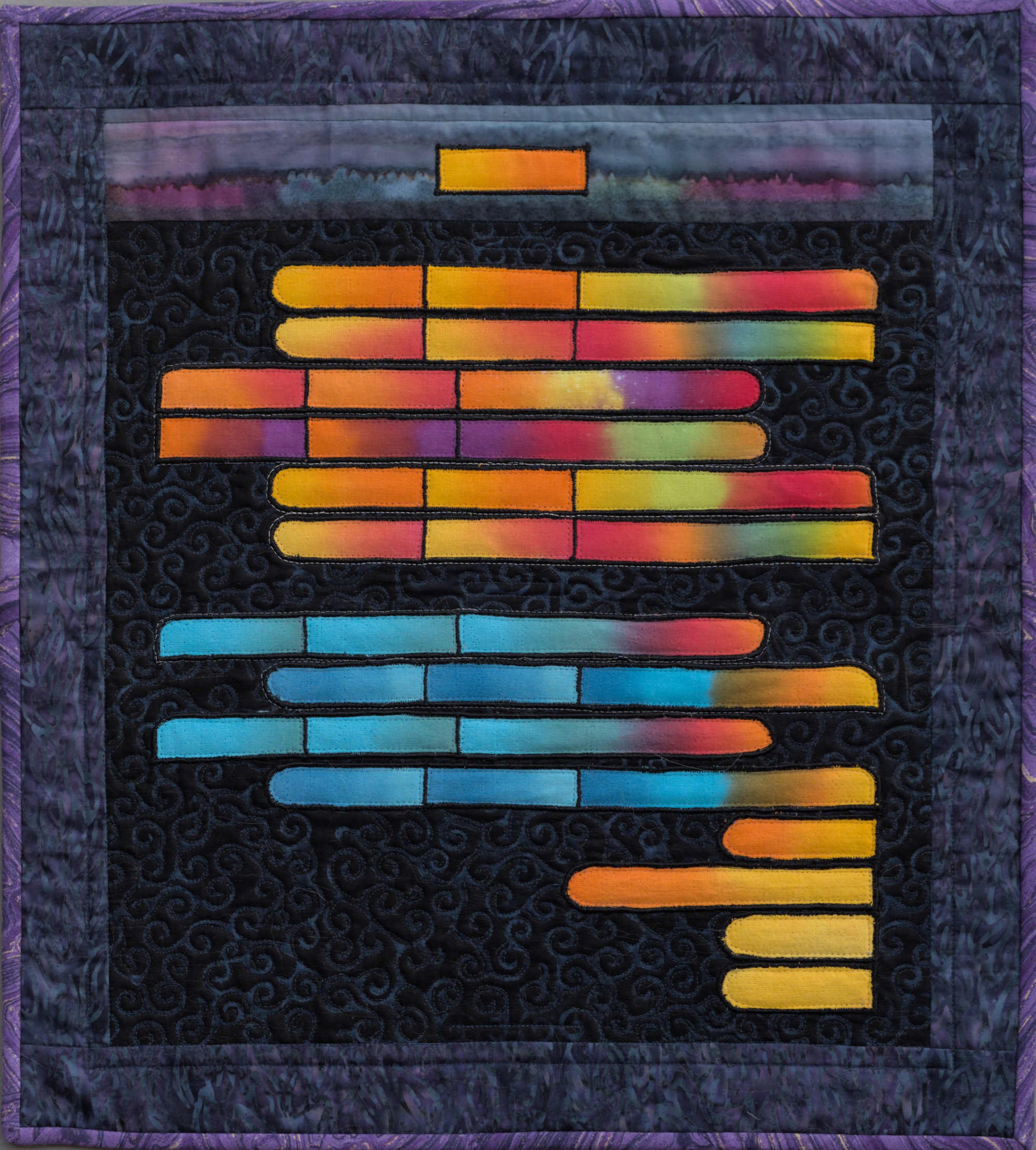
This is part 3 in a series of four.
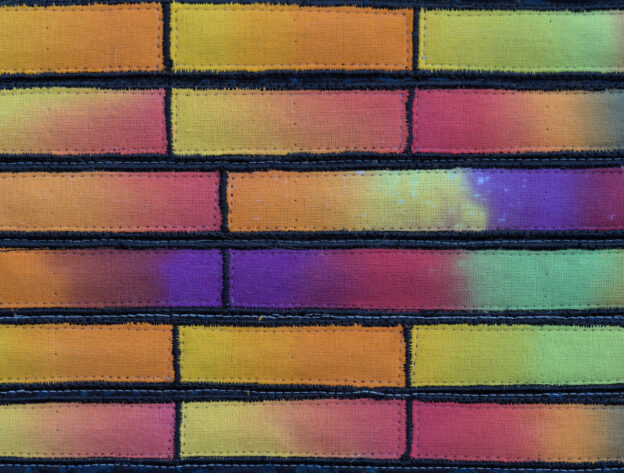
Leave a Reply